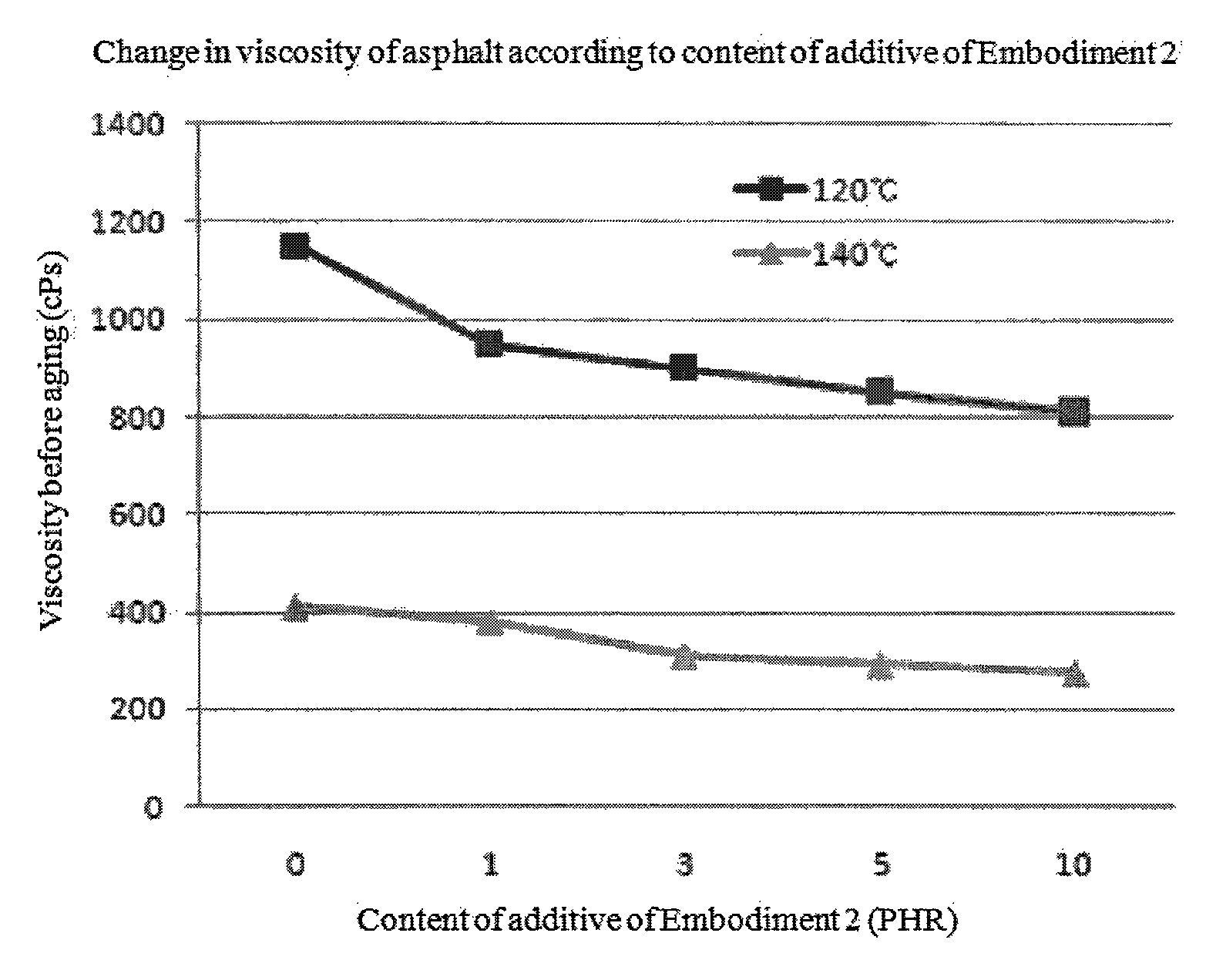Low carbon-dioxide additive compositions and warm-mix asphalt binder and mixture production method using the additive
a technology of additives and additives, which is applied in the direction of coatings, building components, building insulations, etc., can solve the problems of increasing stiffness and reducing the rate of stiffness change, affecting the production efficiency of mixtures, and affecting the safety of workers, so as to achieve low carbon and high viscosity, the effect of producing within a short tim
- Summary
- Abstract
- Description
- Claims
- Application Information
AI Technical Summary
Benefits of technology
Problems solved by technology
Method used
Image
Examples
embodiment 2
[0130]The physical properties of the asphalt were measured according to 0 to 10 parts by weight of the low carbon additive of Embodiment 2 on the basis of 100 parts by weight of the AP, and are shown in Table 4.
[0131]
TABLE 4Asphalt before agingAsphalt afterContent of(Original)RFTOAsphalt after PAVlow carbonViscosityViscosityG* / sinδG* / sinδStiffnessm-valueadditive (phr)(120° C., cps)(140° C., cps)(70° C., kPa)(70° C., kPa)(−12° C., MPa)(−12° C.)011504120.6241.2011890.3319503801.9552.4501850.3339003103.0133.8051800.3358502904.8135.9121760.34108102756.8127.8131730.35RTFO (Rolling Thin Film Oven, thin film heating test): Simulation of aging of the asphalt mixture that is mixed with aggregate at a high temperature in a plant in the beginning, transported to an asphalt construction field, and spread in the process of producing the asphalt mixture.PAV (Pressure Aging Vessel, pressure aging test): Evaluation of aging of the asphalt mixture in a long-term period (In embodiments and comparativ...
embodiment 7
[0144]As can be seen from Table 6, Embodiment 7 of the present invention shows that the resilient modulus representing the durability at room temperature is increased about three times, that the kinetic stability representing the rutting resistance at high temperature is increased about five times, and that the TSR representing the resistance to freezing-thawing and moisture is increased 1.4 times.
[0145]In other words, it can be seen that the WMA mixture according to Embodiment 7 of the present invention is still lower in production and compaction temperatures than the existing asphalt mixture, so that it is possible to reduce energy when the asphalt concrete is produced according to the present invention, and is excellent in rutting resistance and durability properties, so that it is suitable as the low carbon WMA mixture.
PUM
| Property | Measurement | Unit |
|---|---|---|
| melting point | aaaaa | aaaaa |
| weight ratio | aaaaa | aaaaa |
| melting point | aaaaa | aaaaa |
Abstract
Description
Claims
Application Information
 Login to View More
Login to View More - R&D
- Intellectual Property
- Life Sciences
- Materials
- Tech Scout
- Unparalleled Data Quality
- Higher Quality Content
- 60% Fewer Hallucinations
Browse by: Latest US Patents, China's latest patents, Technical Efficacy Thesaurus, Application Domain, Technology Topic, Popular Technical Reports.
© 2025 PatSnap. All rights reserved.Legal|Privacy policy|Modern Slavery Act Transparency Statement|Sitemap|About US| Contact US: help@patsnap.com



